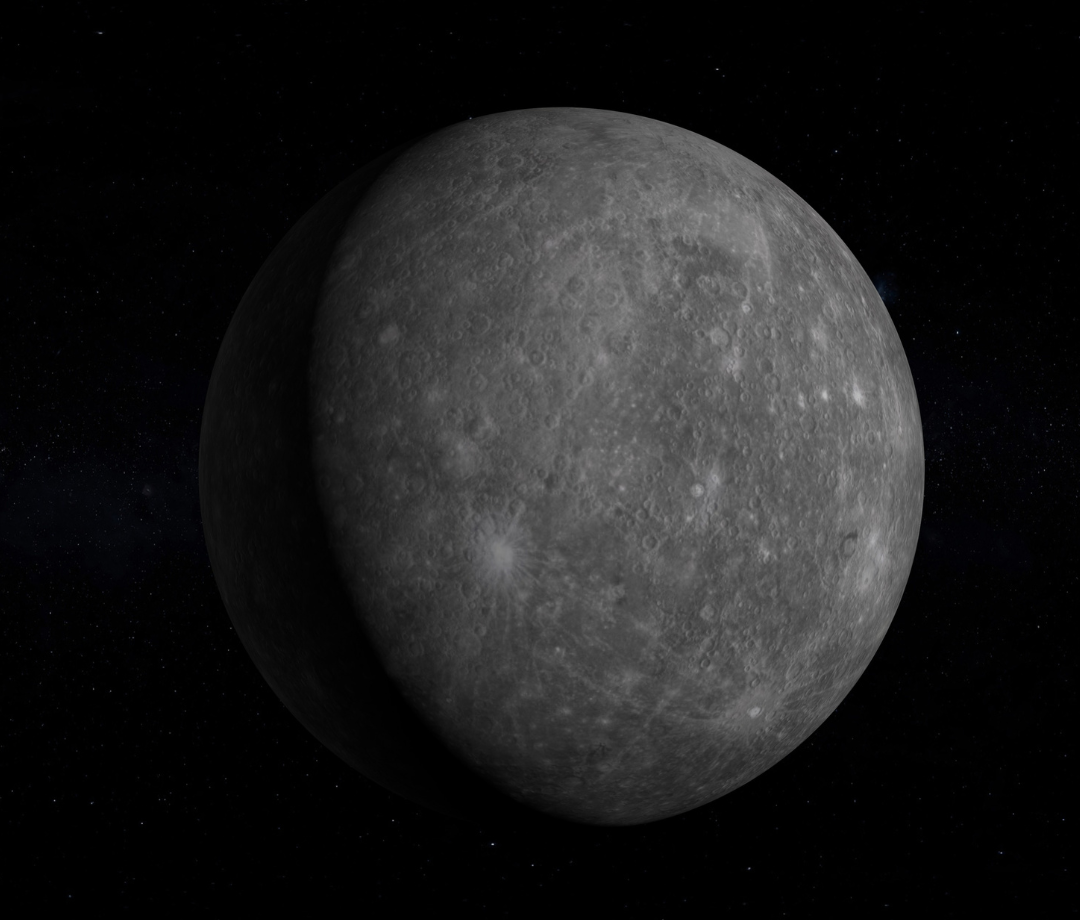What Is Mercury?
Mercury is the closest planet to the Sun and is also the smallest of the eight planets in the solar system, although it was considered the second smallest when Pluto was considered a planet. It is so small that three moons are larger than it, Jupiter’s moons Ganymede and Callisto, and Saturn’s moon Titan. Its proximity to Earth means that despite its small size, you can see it with your naked eye if you look closely enough. It has been known about since before BC times and is named after the Roman messenger of the gods. It is estimated to have been formed approximately 4.5 billion years ago, similar to the other planets, and it has no known natural satellites.
How Long Are Days And Years On Mercury?
Mercury has relatively fast years, but very long days. A year on Mercury lasts only 88 Earth days, or about as long as a single season on Earth. However, a solar day is over 58 Earth days long. Since it is also travelling around the sun as it spins, a solar day (time from sun rise to sun set) is about 176 Earth days, twice as long as a year on the same planet.
What Is The Atmosphere Of Mercury Like?
Mercury’s atmosphere is extremely thin, thin enough to only be considered an exosphere. The atmosphere is thin due to the small size of the planet giving it a weak magnetic field, and its close proximity to the sun. Other bodies in the solar system that have an exosphere, but no atmosphere include Ceres, the moon and Jupiter’s moons Europa and Ganymede. Confirmed chemicals that make up the atmosphere include calcium, helium, hydrogen, oxygen, potassium, sodium and water vapour.
How Warm Is Mercury?
Mercury is extremely hot during the day but is very cold at night. Before you begin to plan a hot summer there, keep in mind that during the day, temperatures can rise as high as 430 °C (800°F) due to how close the planet is to the sun. This makes it hot enough to melt lead. This makes it the second-hottest planet in the solar system during the day. Also, the very low amounts of oxygen might be a problem. However, due to the lack of a thick atmosphere, it gets very cold at night, hitting -180 °C (-290 290°F) on average, making it colder than the average temperatures of Mars, Jupiter and even Saturn. This temperature is as cold as liquid nitrogen. At only 3 degrees C (7 degrees F) colder, oxygen starts to exist as a liquid.
How Windy Is Mercury?
Due to Mercury barely having an atmosphere, it does not have natural wind. However, it does have solar wind, which helps create its aforementioned exosphere. It also helps give it a magnetosphere. The solar wind also damages the area around Mercury, damaging the satellites and other craft near Mercury, making it difficult to study the planet.
How Rainy Is Mercury?
Due to Mercury’s lack of a thick atmosphere, there is no rain as far as we know. However, due to its close proximity to the sun, the planet is often hit by asteroids, meteors, and other space junk that leave large craters on the planet. Most of these meteors are often several feet wide or longer, are made of heavy rocks and metals, and don’t break up due to how thin Mercury’s atmosphere is. This means that if we’re ever able to bring astronauts there, an umbrella is unlikely to assist them.
Does Mercury Have Storms?
Due to the lack of wind, precipitation, and clouds on the planet, Mercury does not have traditional storms similar to what happens on Earth. Even thunderstorms, which are recorded to have happened a lot on other planets, haven’t been recorded on Mercury.
Can Mercury Support Life?
At this moment, it is believed that Mercury is unable to have life, at least as we know it. The conditions are even too varied, unstable, and there is too much radiation for most extremophiles to exist. Unless we take the time to terraform Mercury, it is unlikely that there will be any form of life, with human life being just a pipedream.
Can Mercury Be Terraformed?
It is believed that Mercury would be very difficult to terraform. For those unaware, terraforming is the act of making a celestial body as much like Earth as possible, giving it a proper atmosphere, water, temperature, and even many other features such as gravity are often added in.
The main difficulty in terraforming Mercury comes from the lack of an existing atmosphere, weak magnetic field, and proximity to the sun. The lack of a magnetic field means that the sun will likely blast away any atmosphere that humans would add. The low gravity from its small size would also lead to another way the atmosphere could be lost due to it simply ‘escaping’ into space.
It would also be very challenging to cool the planet enough to make it habitable, and maintaining the proper amount of water would also be difficult.



